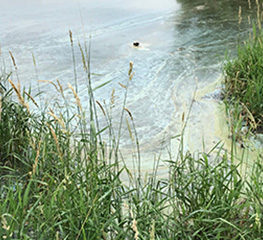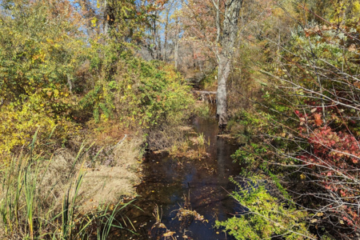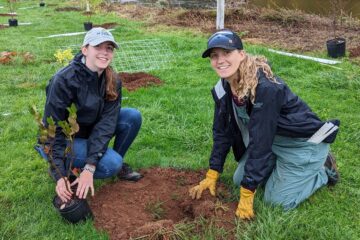(This Letter to the Editor was published in local papers.)
 By now, most everyone has heard about the harmful algae blooms on Lake Hopatcong, Spruce Run Reservoir and Rosedale Lake that have shut down swimming and put a huge damper on boating and fishing.
By now, most everyone has heard about the harmful algae blooms on Lake Hopatcong, Spruce Run Reservoir and Rosedale Lake that have shut down swimming and put a huge damper on boating and fishing.
The cyanobacteria growing in these waters – commonly known as blue-green algae – can cause skin rashes if touched, and flu-like symptoms like abdominal pain, nausea, vomiting and headaches if swallowed. Fish caught in these waters should not be eaten, and boats and equipment used on these lakes should be thoroughly rinsed with clean water.
Here at Raritan Headwaters Association, the region’s watershed watchdog, we wish we could give assurances that the problem will go away quickly and everything will return to normal. But, unfortunately, the situation is likely to get worse before it gets better. The conditions leading to harmful algae blooms – warm water temperatures and excessive nutrients from fertilizers, animal waste, and septic systems – are likely to be present through the end of summer.
It’s not just the well-publicized issues at Lake Hopatcong that we should pay attention to. Many other lakes and reservoirs- are at risk of similar algae blooms, as the sun heats the water and rainstorms cause runoff carrying nitrogen and phosphorus. Round Valley Reservoir, the Delaware & Raritan Canal, Budd Lake and the Manasquan Reservoir are all susceptible, as are many other lakes, ponds and impounded sections of river in our region.
We urge local, county and state health officials to be extra vigilant this summer for signs of harmful algal blooms, and to regularly test the water in vulnerable lakes and waterways.
We also strongly urge officials to take a hard look at the root of problem: stormwater runoff, which washes chemical fertilizers, animal waste and other pollutants into rivers, streams, lakes and reservoirs.
For starters, communities should consider establishing stormwater utilities, as allowed by a new state law. Although the law was derided by opponents as a “rain tax,” it has the power to help prevent the type of harmful algae blooms we’re now seeing.
If commercial and residential developments that increase stormwater runoff are forced to pay, it would be an incentive for future developers to incorporate more “green infrastructure” into their design. And the fees collected by stormwater utilities can pay for projects like rain gardens, bioswales and permeable pavements that can help treat pollution from stormwater runoff.
Local residents can do their part by saying “no” to chemical lawn and garden fertilizers, making sure their septic systems are working properly and picking up pet waste. Save yourself time and money; don’t use any fertilizers on your lawn without getting a soil test done first.
Harmful algae blooms are a manmade problem, and it’s up to us to take action to help solve this problem.
Bill Kibler
Director of Policy
Raritan Headwaters Association
Bedminster, NJ



